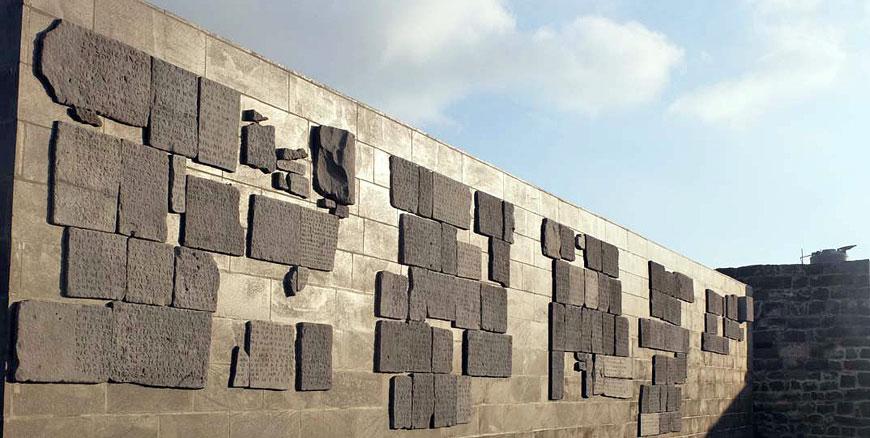You are here
‘Amman the only Arab city with complete components from Islamic times’
By Andrea López-Tomàs - Apr 14,2018 - Last updated at Apr 14,2018

Umayyad building at the Amman's Citadel archeological site (Photo: Jordan Tourism Board)
AMMAN — Amman is the only Arab city that can brag about having a complete town from Islamic times with all of its components, according to Ignacio Arce, associate professor at the German Jordanian University (GJU).
He made the remarks during a conference at the Cervantes Institute of Amman on Thursday about the new archaeological discoveries in Amman’s Citadel and Qasr Al Hallabat organised by the Spanish Archaeological Mission to Jordan.
“Amman is the only Arab city that can brag about having a complete city from Islamic times with all of its components: the baths, the mosque, the bazaar square, etc.,” said Arce during the event.
“Our biggest discovery is that there wasn't just a palace, but also a palatial city with it."
Ignasio Arce explained their discoveries in Qasr Al Hallabat which was originally built as a Roman fortress and then became an Umayyad palace. “We wanted to know what happened between those periods."
The Spanish Archaeological Mission to Jordan found the previous existence of a monastery and palace after the abandonment of the Roman fortress.
“These findings showed us the presence of the Ghassanids which were Arab tribes christianised and were part of the Roman defensive strategy against the Persians,” Arce explained.
The archaeologist said: “We have found this pattern all over the region in these castles placed in remote areas to defend the borders of the Roman Empire.”
In Qasr Al Hallabat, the Spanish Archaeological Mission to Jordan also discovered the oldest Islamic garden conserved.
Arce highlighted the improvements that the discovery of the palatial city brought to Amman: “We accomplished our goal which was to put the city of Amman in the touristic map and make people stay in the capital for at least a day.”
“We wanted to redistribute the flow of tourists to economically deprived areas but with great historical and cultural wealth,” Arce said.
The Spanish archaeologists try to make the local communities aware of their land’s richness and teach them the necessary techniques to exploit them, he said.
“Besides creating new opportunities for their socioeconomic development, we aim to reinforce their pride when they become actors in the recuperation and restoration of their cultural patrimony,” explained the archaeologist.
Arce has been chief of the Spanish Archaeological Mission to Jordan during more than 20 years. The mission focused all their efforts in Amman’s Citadel since 1995 to 2001 and since then, they have been working in the desert castles.
Currently, Arce is an associate professor at the GJU and he is in charge of the Architectural Conservation Master Programme.
“My aim is to make Jordan the regional centre of patrimony reconstruction,” Arce expressed. The master programme is addressed to Jordanian and Syrian refugees to teach them how to reconstruct their cultural patrimony once the war ends.
Related Articles
AMMAN — Greek inscriptions containing more than 300 lines and approximately 70 chapters engraved in 160 basalt blocks have been found in sec
AMMAN — A relatively new approach in the discipline, the archaeology of architecture was at the heart of a recent lecture held as part of th
AMMAN — The restoration of the Umayyad bathhouse “Hammam as Sarrah” was only recently completed after financial obstacles halted a 2009-2012


















